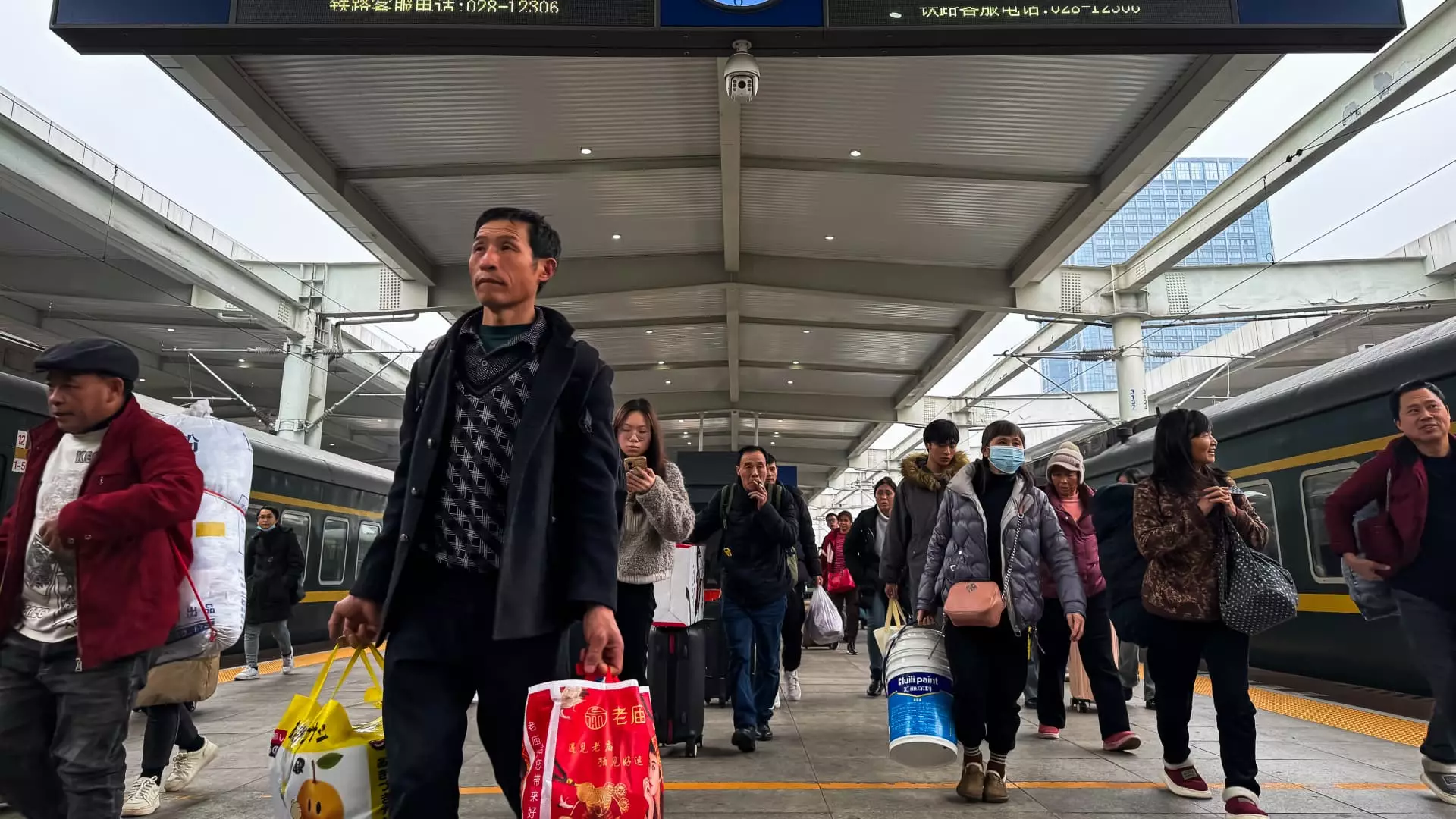As 2024 unfolds, China’s economic landscape appears fraught with complexities, revealing a narrative of stagnation amidst attempts at rejuvenation. Investor optimism is met with a backdrop of tepid demand and lingering deflationary pressures, raising questions about the efficacy of government initiatives. With significant dates on the economic calendar looming—most notably, the annual parliamentary meeting in March—analysts are keenly observing the interplay between fiscal policy and real-world outcomes.
Despite promises of fiscal stimulus and interest rate reductions from policymakers since late September, tangible economic revitalization remains elusive. The anticipated measures, which include extensive fiscal support, are still under wraps, sparking concern about their potential impact. The BlackRock Investment Institute recently emphasized in its weekly report that current stimulus efforts are insufficient to mitigate the broader economic deceleration. Structural challenges, including a decline in domestic demand and escalating deflation concerns, further compound these issues.
Official consumer price indices signal troubling trends; 2024 witnessed inflationary growth of a mere 0.5%, marking the most languid rise in a decade. Market sentiment reflects these concerns, as consumer spending falters, foreign investment sees a downturn, and various sectors grapple with growth limitations. Beijing’s mayor, Yin Yong, underscored these issues in his annual report, advocating for heightened inflation targets and tech development to galvanize recovery.
Amidst a climate of uncertainty, the commercial real estate sector serves as a critical indicator of broader economic health. Recent analyses suggest that the pressures confronting commercial properties are likely to persist—rents for high-end office spaces in Beijing plummeted by 16% in 2024 and are forecasted to decrease further. Such trends recall the depths of the 2008 financial crisis, inducing a sense of urgency among stakeholders.
Challenging few expectations, new shopping centers are witnessing a notable 90% occupancy rate within a year of their opening, despite initial rates below traditional benchmarks. This resilience hints at a potential shift in consumption patterns but is tempered by the reality of ongoing challenges in the real estate market and associated sectors, which have historically contributed over a quarter of China’s economic output.
China’s government response has been methodical, opting for trade-in subsidies and technological upgrades rather than direct consumer cash distributions akin to those employed in the U.S. during the pandemic. A recent announcement revealed a 150 billion yuan ($20.46 billion) allocation for ultra-long bonds targeted at boosting domestic consumption and equipment improvements. While officials expressed optimism that these subsidies could catalyze heightened recycling transaction volumes, doubts loom regarding their capacity to sustain long-term consumer demand.
Analysis by Nomura suggests that any initial surge in sales driven by these initiatives may diminish in momentum during the latter half of the year, especially as soft new home sales limit related expenditures. With a historical reliance on real estate for economic stability, the transition phase presents challenges for the Chinese economy. Recent governmental conversations regarding easing restrictions on construction indicate a potential pivot to reinvigorate the sector further.
Adding a layer of complexity to China’s economic recovery are ongoing tensions with the United States, characterized by stringent export controls and a focus on prioritizing domestic capabilities. This strategic shift is reshaping market dynamics, compelling foreign businesses to reassess operations in China amid rising costs and productivity concerns. European businesses, in particular, face pressures to localize in order to maintain their foothold in this significant market.
Official discourse emphasizes the intertwined nature of security and economic development. Yang Ping, from the National Development and Reform Commission, articulated a strategy prioritizing consumption over investment efficiency, reflecting a broader policy adjustment aiming to bolster domestic demand incrementally.
While initial government efforts signal a commitment to bolster the economy, a significant turnaround remains at a distance. The combination of dwindling consumer confidence, a weakened real estate sector, and complexities associated with international relations suggests that the road to recovery will be gradual and fraught with obstacles. With the critical parliamentary meeting on the horizon, stakeholders await more defined measures that could steer China toward a path of sustainable growth. Nevertheless, both domestic and international observers remain cautious, aware that the intersection of government policy and economic fundamentals will ultimately determine the success of China’s economic resurgence.

